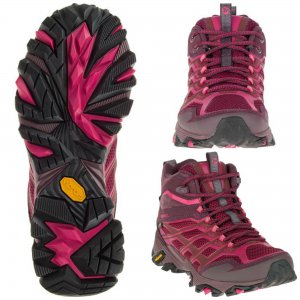Tick bites: The dos and don’ts
GP reveals how to prevent, identify and treat tick bites to avoid tick-borne illnesses such as Lyme Disease
With the Autumn tick season upon us, and many Brits headed to the fields and forests to enjoy the spectacle of the leaves changing colour, Dr Hemal Shah, Associate Medical Director at Livi, the digital healthcare provider, shares advice to keep you and your family safe from ticks and the potentially serious diseases they can carry.
Tick numbers in the UK are highest during spring and autumn. They are commonly found in woodland and forests, but can live anywhere damp and shady. These small parasites are members of the spider family that attach to skin and bite. They can’t jump or fly, but it’s easy to pick one up if you are walking through long grass or greenery.
Though rare, tick-borne illnesses such as Lyme disease can be serious. Lyme disease is a bacterial infection that can be spread to humans by infected ticks. If left untreated, Lyme disease can progress to more serious symptoms including persistent fatigue, neurological symptoms and inflammatory arthritis. However, Lyme disease is usually easier to treat if it’s diagnosed early, so identifying symptoms quickly is crucial.
Symptoms of Lyme disease:
- Circular or oval shape rash around a tick bite
- Fever
- Headache
- Fatigue
- Joint or muscle pain

Dr Hemal Shah, Associate Medical Director at Livi, explains: “There is nothing better than exploring the great outdoors with your family, but if you are visiting a high-risk area such as forests, heathland, moorland, or areas occupied by sheep and deer, it’s important to check for ticks regularly. The sooner ticks are removed, the lower the risk of developing tick-borne diseases such as Lyme disease, Babesiosis and Ehrlichiosis. Though these tick-borne diseases are rare in Britain, you should seek immediate medical attention if you begin to feel unwell after being bitten by a tick.”
How to safely remove a tick:
- Use tweezers or a specially designed tick-removal tool available at most pharmacies
- Grasp the tick as closely as possible to the skin
- Pull upwards, with a steady even pressure
- Never twist or jerk the tick as this can risk leaving the mouthparts behind
- Clean the bite with antiseptic or soapy water
Steps to prevent tick bites:
- When visiting tick infested habitats, wear long sleeve tops and long trousers, tucked into boots
- Use an insect-repellent for ticks which contains 20-30% DEET or 20% Picaridin
- Apply this repellant to any exposed skin and reapply it regularly as you would with a sunscreen
- Treat boots, clothing and camping gear with 0.5% permethrin (an insecticide) spray or solution (you can get wash-in formulas effective through several washes)
- Keep to the centre of paths and trails and trying not to brush up against greenery
- Carry tweezers or a tick removal tool in your first-aid kit to remove ticks as quickly as possible
When to see a doctor:
If you develop any symptoms of Lyme disease, consult your doctor immediately to let them know that you have been bitten, or think you might have been.
Your doctor will likely prescribe a course of antibiotics if you have suspected or confirmed Lyme disease to kill the bacteria that transmit the disease.
For more information on tick bites and Lyme disease, you can learn more here.
Have you ever suffered a tick bite? Do you know what do if it happens to you?









No Comments Yet!
You can be first to comment this post!